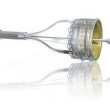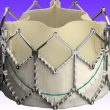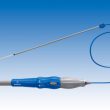Even though the incidence of complications in transcatheter aortic valve replacement (TAVR) have significantly decreased, there is one in particular that remains a concern since, when mild, it is associated to increased events rate. This complication is prosthetic paravalvular leak , which happens between the native annulus and the stent. The Lotus valve, completely repositionable, uses a<a href="https://solaci.org/en/2018/01/23/lotus-valve-in-real-life-patients-the-near-total-lack-of-leaks-is-its-greatest-strength/" title="Read more" >...</a>
Cardiac Damage: Should we start to assess it?
Courtesy of Dr. Carlos Fava. The current recommendation for aortic valve replacement is based on stenosis severity based on valvular criteria (mean transvalvular gradient, peak aortic velocity and valve index area) and the presence of symptoms, in addition to comorbidities, mainly for risk stratification. However, ventricular damage and/or its effect on cardiovascular hemodynamics are not regarded<a href="https://solaci.org/en/2017/12/20/cardiac-damage-should-we-start-to-assess-it/" title="Read more" >...</a>
Failing Surgical Bioprosthesis: A Challenge on the Rise
Courtesy of Dr. Carlos Fava. The gold standard for failing aortic bioprosthesis has traditionally been surgery. However, since the first valve in valve (TAV-in-SAV) report in 2007, by Wenaweser, transcatheter valve implantation has emerged as a valid alternative. Even so, at present there is not enough scientific evidence in this regard. The present study analyzed<a href="https://solaci.org/en/2017/12/15/failing-surgical-bioprosthesis-a-challenge-on-the-rise/" title="Read more" >...</a>
Lung Disease and TAVR: Beneficial for a Reduced Group of Patients
Chronic Lung Disease often affects patients with severe aortic stenosis undergoing transcatheter aortic valve replacement (TAVR) or surgery. In fact, this is why patients with lung disease are often deemed inoperable and prescribed TAVR. This is the first time the benefit of TAVR has been assessed in this group of patients, for symptoms of these conditions can<a href="https://solaci.org/en/2017/11/21/lung-disease-and-tavr-beneficial-for-a-reduced-group-of-patients/" title="Read more" >...</a>
New Study Confirms TAVR Durability at 5 Years
The ADVANCE study was designed to evaluate the safety and effectiveness of transcatheter aortic valve replacement (TAVR) with self-expanding prosthesis CoreValve in “real world” patients with symptomatic, severe aortic stenosis at high surgical risk. Patients were enrolled from 44 experimental centers in 12 countries; treatment approach and choice of anaesthesia were determined by the local Heart Team.<a href="https://solaci.org/en/2017/10/25/new-study-confirms-tavr-durability-at-5-years/" title="Read more" >...</a>
Tricuspid and Bicuspid Valves Present More Coincidences Than Expected
There is more and more positive evidence that new-generation transcatheter valves, originally designed to treat tricuspid aortic valves, work perfectly fine on bicuspid aortic valves. A comparison of computerized tomography (CT) scans obtained before and after the procedure showed that the most commonly used devices appear to reshape the aortic annulus to the same degree<a href="https://solaci.org/en/2017/10/13/tricuspid-and-bicuspid-valves-present-more-coincidences-than-expected/" title="Read more" >...</a>
Positive Outcomes of CoreValve Evolut in Large Population
The Evolut R, as well as its predecessor the CoreValve, is a self-expandable valve, supra-annular, made of porcine pericardium in a nitinol frame. Amongst its improvements, it has a better profile and the option to resheath. This makes it fully repositionable and even recapturable. We only needed to confirm these technical advantages would translate into clinical<a href="https://solaci.org/en/2017/08/30/positive-outcomes-of-corevalve-evolut-in-large-population/" title="Read more" >...</a>
Valve Deterioration after TAVI Is Rare and Should Not Prevent Advancement to Younger Populations
Durability ─or better yet, lack of deterioration─ is still a matter of debate when considering transcatheter aortic valve intervention (TAVI), especially now that it is being explored as a real alternative for younger patients. A recently published meta-analysis offers more evidence and suggests TAVI deterioration is mostly rare within the first 5 years. According to<a href="https://solaci.org/en/2017/08/14/valve-deterioration-after-tavi-is-rare-and-should-not-prevent-advancement-to-younger-populations/" title="Read more" >...</a>
Dual Antiplatelet in TAVR: Is Single Better?
Courtesy of Dr. Agustín Vecchia. As TAVR is expanded to lower risk patients, complications become more relevant. As regards stroke, the PARTNER 2 and SURTAVI one year outcomes are 8.0% and 8.2% respectively. The mechanisms behind this complication have not yet been clarified and, therefore, neither have guideline recommendations in this regard (as we can tell<a href="https://solaci.org/en/2017/08/02/dual-antiplatelet-in-tavr-is-single-better/" title="Read more" >...</a>
Transcatheter valve replacement in the bicuspid valve is increasingly performed, but challenges remain
As experience increases, transcatheter aortic valve replacement (TAVR) has expanded to different populations and anatomies. This study sought to compare technical and clinical outcomes in patients with bicuspid versus tricuspid aortic stenosis from the Bicuspid AS TAVR Multicenter Registry. Outcomes of 561 patients with bicuspid valves and 4546 patients with tricuspid valves were compared. Propensity score matching was used<a href="https://solaci.org/en/2017/07/05/transcatheter-valve-replacement-in-the-bicuspid-valve-is-increasingly-performed-but-challenges-remain/" title="Read more" >...</a>









